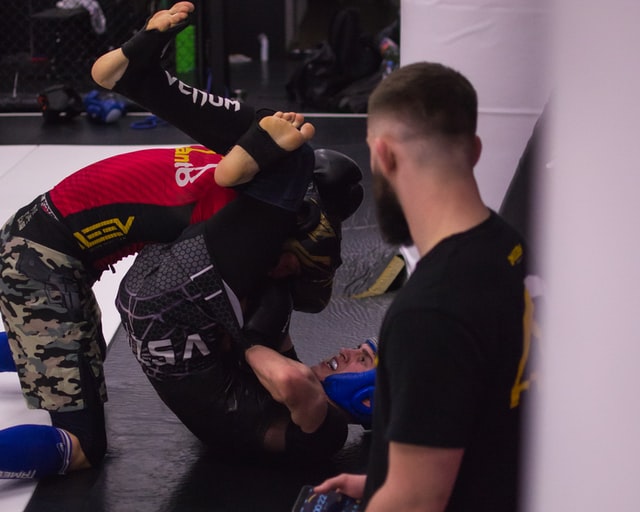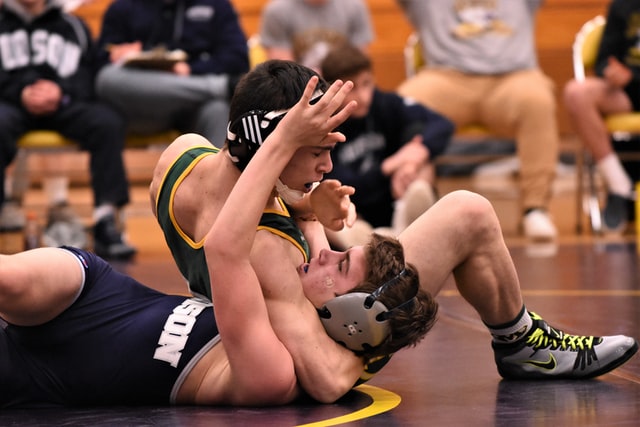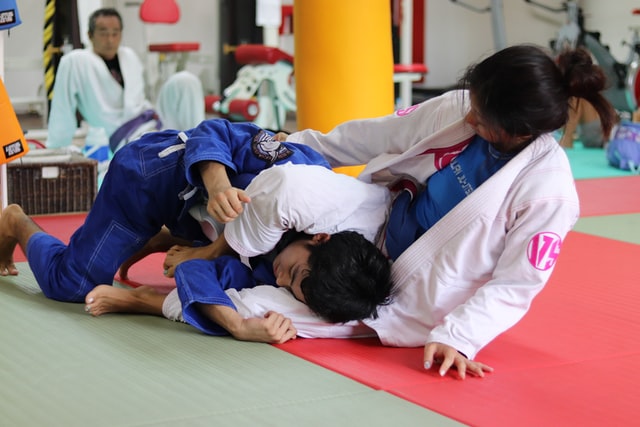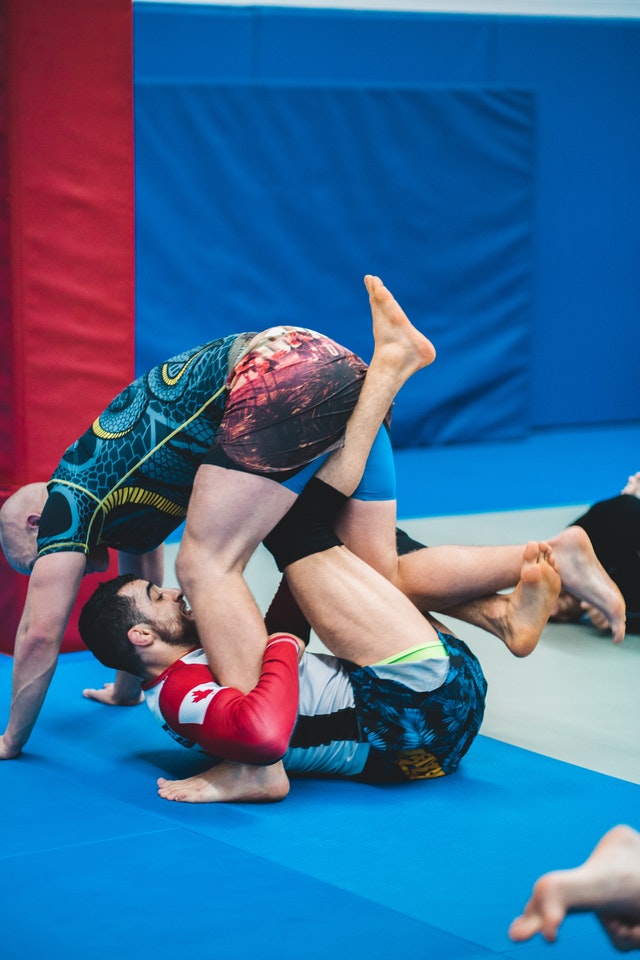BJJ vs. Sambo 2025: Which ones better?
BJJ vs. Sambo, which one is more devastating? Check here to know everything about these martial arts and how they’re different from each other.
We’ll discuss the history of Brazilian Jiu-Jitsu or Bjj and Sambo, basic rule differences between them, and belt system and progression differences as well. Also, we’ll focus on their training differences, equipment differences, and will explore which one is better for kids and for self-defense. So, without further ado, let’s dig into today’s discussion.
Origin of BJJ vs. Sambo
First, we’re going to start with a bit of a history lesson. In this section, you’ll know about the origin and history of both BJJ and Sambo.
History of BJJ
To understand the roots of BJJ, we must know about the roots of Judo, as BJJ branched off from Judo (BJJ vs Judo Comparison). Jiu-Jitsu was created to aid the Samurais if they ever lost their horses and weapons. Jiu-Jitsu used to comprise a series of
In the late 19th century, Jigoro Kano created the Kodokan Academy, where he would teach the arts of Jiu-Jitsu. The teachings of Jigoro Kano were later established as Judo. It was Kano who created the belt and progression system of Judo, which was later taken up by the other martial arts.
A student and later instructor at Kodokan, Mitsuo Maeda, traveled to the United States in 1904. He held a lot of presentations back then and traveled to Brazil in 1914. During his stay in Brazil, he made friends with a businessman known as Gastão Gracie.
Gastão’s son Carlos started training under Maeda. Carlos was an able teenager, and he successfully learned the art of Jiu-Jitsu from Maeda. Later on, Carlos tried to pass this knowledge on to the rest of his brothers.
However, one of the brothers, Helios, was of short size, and he lacked the strength to perform Jiu-Jitsu as well. But that didn’t stop him from trying. Unable to perform the basic Jiu-Jitsu techniques, Helio started to revamp the techniques so that anyone could perform them. From here, Brazilian Jiu-Jitsu was born.
BJJ is a form of Jiu-Jitsu that doesn’t discriminate a person according to his size or strength. In fact, anyone can learn to perform the BJJ techniques if he’s instructed properly. This accessibility to BJJ is what makes it so famous.
BJJ gained fame all over Brazil as the Gracie brothers implemented this technique in every contest that provided flexibility. The Gracie brothers rarely lost, which made a lot of martial arts trainees, and practitioners follow their methods.
However, even at this point, BJJ was restricted to Brazil only. Later in 1970, Helio’s son Rorion Gracie arrived in the US, and he did so with a plan. He had aimed to make his family’s art well-known across the globe.
Once Rorion came to the USA, he partnered up with some businessmen and started a tournament known as UFC, a martial arts tournament that would provide extreme flexibility so that techniques like BJJ could be used. The first UFC was held in 1993.
To prove the effectiveness of BJJ, Rorion selected his younger brother to participate in it. His brother, Royce, was of small build. When the tournament had begun, the spectators had expected to see Royce getting beaten up easily. To their surprise, the small Brazilian took down each of his opponents one by one with great technique. This was enough to get BJJ the highlight it needed, and it spread across the world like wildfire.

History of Sambo
While BJJ was developed to be used in competitions, Sambo was created for more practical applications. The founding fathers of Sambo are Vasili Oshchepov and Viktor Spiridonov. This duo had worked relentlessly with a team of experts to create a martial arts form that would help the soviet army dominate in hand to hand combat system.
Although Sambo is a bit different from basic Jiu-Jitsu, it was inspired by it. Vasili Oschepkov was a second-grade black belt holder in Judo, and he was a former student of the very founder of Judo, Jigoro Kano.
On the other hand, Viktor Spiridonov was proficient in Greco Roman martial arts and freestyle wrestling. Plus, he also held an interest in Jiu-Jitsu. This duo combined their years of experience and knowledge. Thus, Sambo was created, combining Judo, Karate, Jiu-Jitsu, and various other fighting styles.
Sambo was used by the military of the Soviet Union during its early times. It wasn’t until 1938 that Sambo was recognized as an official combat sport of Russia, and this was done with the help of the USSR- all Union Sports Committee. This gained a lot of popularity, and there were many factors working behind it. In fact, the point that it wasn’t content from pre-communist times made it much more suitable for that time.
Unlike BJJ, which was created only for competitions, Sambo came with versatile techniques that focused on chokes, armlocks, leg locks, throws, and also weapons disarmament. As you can see, Sambo is a mixed martial art that can be applied to both competitions and practical life.
One of the major differences between Sambo and BJJ is that Sambo didn’t gain worldwide popularity, as BJJ did. The fame of Sambo actually started to grow when the Sambo practitioners started participating in international Judo competitions. The aggression and versatility of Sambo attracted many eyes, and many Japanese and European practitioners started taking an interest in Sambo.
As the added leg locks, disarmaments, and ground grappling techniques kept attracting more people, Sambo finally reached the USA around 1970. From then, Sambo is being taught along with BJJ and Judo.
Rule differences between BJJ and Sambo
Although both BJJ and Sambo offer a range of grappling techniques and no striking, there are a lot of differences between the ground rules of them. In this section, we’ll go through the rules of BJJ and Sambo, and later we’ll highlight the differences.
Rules of BJJ
When it comes to BJJ, the winner is declared depending on submission or points. If anyone of the contestants submits, the other is declared the winner. Here are some rules of a BJJ match:
- A BJJ contestant will win if the other submits
- If the competitor loses consciousness
- The contestant with the most points will be declared the winner
- If the points of both are equal, it depends on the referee, who can choose the winner freely.
- Lasts from 2-10 minutes depending on belt and age
- The contestants can stall, but if they don’t make any physical move for some time, the referee may call them to stand up
- Includes a variety of chokes, armlocks, and leglocks.
As you can see, BJJ is mostly dependent on the submission of the opponent. That’s why BJJ practitioners need a lot of patience. Unlike Sambo, BJJ isn’t an aggressive sport. Plus, BJJ relies more on ground grappling techniques, which is a huge limiting factor.
Rules of Sambo
Sambo offers more versatility when it comes to techniques, and there are a lot of differences between Sambo and BJJ when it comes down to the rules. Let’s take a look at them:
- Submission will bring one defeat, just like BJJ
- If one of the contestants can gain a lead of 12 points
- If a contestant can perform a perfect throw, he’ll be declared the champion.
- The contestant with the highest points will be declared as the champion
- It offers versatility when it comes to the techniques. However, the Sambo practitioners can’t use Chokes
- If it’s not Combat Sambo, the practitioners can’t strike their opponent
- A match can last up to 5 minutes
Although Sambo offers more variety when it comes to techniques, it doesn’t allow the Sambo fighters to use chokes. Chokes are one of the most effective moves when it comes to Sambo. However, there’s freestyle Sambo that allows the fighters to use chokes.
Then again, there’s Combat Sambo, which is another form of this art. In Combat Sambo, the fighters are allowed to strike their opponent, and it’s essentially the art that was taught to the Soviet Military and Police.

Belt System and Progression Differences
Although the belt system of martial arts started with Judo, different forms of martial arts took and implemented it differently. Now, we’ll talk about the belt systems of BJJ and Sambo.
Belt and Progression System of BJJ
While Sambo doesn’t offer any belt system, BJJ offers a great belt system (we have a review of best BJJ belts to buy as well). In fact, the belt system of BJJ is a simplified form of the Judo belt system, which has a complex hierarchy. Let’s look at the belt system of BJJ, shall we?
In BJJ, the trainees, practitioners, and masters all have belts that can visualize their proficiency in BJJ. It starts with a white belt. Everyone who starts in a BJJ academy will receive a white belt, and it has no age or time requirement.
Usually, a student may spend six months to 18 months in a white belt. During their time in the white belt, the students mostly struggle to learn the very concept of the martial art, and they get to know the fundamentals of BJJ.
They are taught the postures, the basic sweeps, submissions, and defense. They are also taught how to close or open guard and how to escape. A few intermediate techniques are also taught while in a white belt, but that doesn’t mean that the trainees have to master them.
After the white belt comes the blue belt, a student must be at least 16 years old to receive a blue belt. Although the white belt is given to anyone, the blue belt can only be achieved through training and by proving one’s skill.
During this time, the trainees are motivated to try out new techniques. The trainees will venture into the unknown, seeking out the styles and techniques that work the best for them. Usually, the students remain in the blue belt for two to five years.
Then comes the purple belt, and the minimum age requirement for the purple belt is the same as the blue belt, 16 years. Attaining a purple belt is quite difficult, and a person must put a lot of effort to get a purple belt.
A blue belt will only be promoted to a purple belt if the mentors find that the trainee has enough confidence in his skills. If a blue belt feels intimidated or if his confidence drops in front of other blue belts, he won’t be promoted to purple belt.
The main reason behind this is that the purple belts will not only practice to improve themselves, but they must guide the blue belts in their journey. That’s why it’s said that you start contributing to the BJJ community from the time you get a purple belt.
During this time, the trainees not only focus on the skills and techniques, but they try to understand the very essence of martial arts. A purple belt must be able to understand the mindset of the partner he’s sparring with.
A purple belt must also be able to perform complicated techniques, and they must spar regularly with the brown belts.
After being done with a purple belt, a person will be promoted to brown belt. To get a brown belt, a person must be at least 18 years old. The brown belt is considered to be a transition phase, as it’s the last belt before the black belt.
At this stage, the practitioners must be able to perform complicated techniques properly, and they should start experimenting with a particular set of skills. This is the time where the practitioners specialize in a certain style. Usually, a brown belt must spend 1 to 2 years before he is promoted.
Then, there’s a black belt, which is the most sought-after belt in all forms of martial arts. Earning a black belt is very difficult, as there are many official proceedings of getting a verified black belt. Plus, a black belt must be proficient in his art. Usually, a trainee requires around ten years to earn a black belt.
Finally, there’s the red belt. However, to receive the red belt, the practitioners must have the red and black belt and the red and white belt. These belts are awarded depending on the time the bearer spent as a practitioner. The red belt is known as the grandmaster belt. However, there are two degrees to this belt.
There’s the 9th-degree grandmaster belt and the 10th-degree grandmaster belt. The 9th-degree grandmaster belt can be achieved after following the procedures, but it’s impossible to attain the 10th-degree grandmaster belts because these belts were awarded to the founders of BJJ only.
Belt and Progression System of Sambo
Unlike BJJ or Judo, there’s no belt system in Sambo. Yes, there’s no way to determine the skill of a Sambo fighter using a visual cue. However, that doesn’t mean that the Sambo fighters won’t wear any belt.
During the competitions, the Sambo fighters will wear either red or blue belts. The purpose of this belt is to hold the jacket together, and it doesn’t depict any sort of rank.
In fact, Sambo doesn’t have an organized ranking system that you can climb with practice over time. However, some academies or clubs may issue a belt system in Sambo to inspire the trainees.
As you can see, BJJ has a well-crafted ranking and belt system. This allows the instructors to divide their students accordingly, plus it’s easier to acknowledge practitioners of different levels easily. However, the same can’t be done with Sambo, which is definitely a drawback.

Class / Training Differences
There aren’t many differences in the BJJ and Sambo training and classes. Although they teach different techniques, the method is more or less the same. Here’s a short description of how a class of BJJ and Sambo might be:
- The class will start off with a warm up session. During this time, the instructors will guide the trainees through some stretches from the head to the legs. The aim of the warmup session is to prevent any muscle pulls during the session. This takes around 10-15 minutes on average.
- After that, there’s the instruction session. In this section, the trainees will be paired with each other, and they will be taught new techniques, or they’ll polish their existing techniques by practicing them on their partners.
- Finally, there’s the sparring session. In this session, the pair will spar with each other under the guidance of an instructor.
Clothing and Equipment
There are a lot of dissimilarities between the clothing and the equipment of BJJ and Sambo. Let’s talk about them here:
Clothing of BJJ
In BJJ, the participants wear a BJJ Gi made of reinforced material. As BJJ includes a lot of gripping, the clothing is made to be stitch-free. Sometimes, the BJJ Gi might feel light, but they are very durable.
Then again, the BJJ Gi is usually tight. This allows the participants to grip each other easily. Then there’s no Gi BJJ. Nowadays, no-Gi BJJ is becoming increasingly popular. Although the participants don’t wear a BJJ in this form of BJJ, they wear BJJ rash guards to protect themselves and their opponents from direct contact.
Clothing of Sambo
Unlike BJJ, there is a lot of protective gear in Sambo. Here are the gears that you’ll see in a regular Sambo match:
Sambo Gloves:
The Sambo Gloves are made of soft cushioning, and the fighters must wear these during the fight. The Sambo gloves are designed in such a way that the opponents are not injured badly during the session.
Boxing Helmet:
The boxing helmets are the standard helmets you see at most boxing or wrestling tournaments. These helmets are padded, and they’re designed to minimize injuries to the head and jaw. There are plastic coverings with these helmets that protect the ears of the wearer.
Groin Guards/Cups:
The BJJ groin cups are worn as an undergarment, and these are worn to minimize the damage to groin areas of the wearer.
Mouth Guards:
The BJJ mouth guard is a common protective measure. The gum shield helps the wearer protect his teeth, lips, and tongue.
BJJ vs. Sambo: Pros and Cons
Although BJJ and Sambo are different forms of martial arts, they both offer some common advantages. Then again, there are some pros and cons that they have over each other. Now, we’ll talk about those in detail.
Advantages of Both BJJ and Sambo
- Helps the learner stay fit
- Offers peace of mind to the practitioners
- You can learn how to defend yourself by practicing BJJ and Sambo
- BJJ and Sambo can provide a confidence boost to the trainees, allowing them to take on real-life challenges easily.
- Both BJJ and Sambo offer a great community. This offers the trainees a great opportunity to grow as a whole.
These are the advantages that both BJJ and Sambo offer. However, there are some advantages that one offers, and the other doesn’t.
BJJ Pros
- BJJ offers a variety of ground grappling tricks. If you want to learn ground tactics, BJJ is the one you should learn.
- BJJ is more renowned than Sambo
- A lot of BJJ competitions are held regularly
Sambo Pros
- Sambo offers more versatile techniques. While BJJ is limited to ground techniques mostly, Sambo isn’t.
- Sambo is better for practical application
- Sambo is better for self-defense when weapons are involved

Which is Better to Learn for Self-defense?
Take it like this, when someone attacks you, he’s more likely to be aggressive. Aggression can only be countered with aggression, and by aggression, I mean fast movements and powerful strikes.
Sambo is fast-paced, it offers some amazing striking techniques, and Sambo also offers techniques that can be used to disarm an opponent. Sambo was created for practical hand to hand combat for the Soviet army. If you have enough Sambo skills and techniques up your sleeve, you’ll be able to fend off multiple threats, even if they’re armed with melee weapons.
While much of BJJ doesn’t offer any technique related to striking it definitely teaches self-defense maneuvers and blocking strikes. Also, we need to consider that most street fights end up on the ground and this is where the true advantage of BJJ shines through. With its highly effective techniques, it is easy to control your opponent on the ground and submit, or hold them there while you’re waiting for help to come.
That’s why, if you want to learn martial arts for self-defense, you may choose BJJ over Sambo.
BJJ vs. Sambo for Kids
If you’re looking for the one that’ll be better for your kids, that’s definitely BJJ.
Sambo is a lot more aggressive and violent than BJJ. Even if your kid doesn’t participate in Combat Sambo, it’s still violent and aggressive. This is one of the major reasons why you can teach BJJ to your kid.
Sambo doesn’t offer a ranking system like most other martial arts. Although this shouldn’t matter to the adults, it’s a huge drawback for the children. The belt and ranking system are a major factor for driving the children. When this is absent, the children might not feel enthusiastic about learning Sambo.
Then again, it’s been proved that the participants burn more calories during a BJJ session. Although there isn’t much research in this sector, the data from calorie-tracking apps lead to this conclusion. So, if fitness is one of the main reasons you’re trying to get your kid into martial arts, you should definitely get him or her into BJJ.
Final Thoughts
Both BJJ and Sambo are amazing forms of martial arts. However, both might not appeal to every person, and that’s what it comes down to eventually. You should definitely choose what you like. However, if you’re looking forward to learning martial arts because you want to defend yourself, you may choose BJJ. If you’re training to eventually compete and immerse yourself into an international community of practitioners, BJJ offers more international competitions. So, it’s your choice to make.

